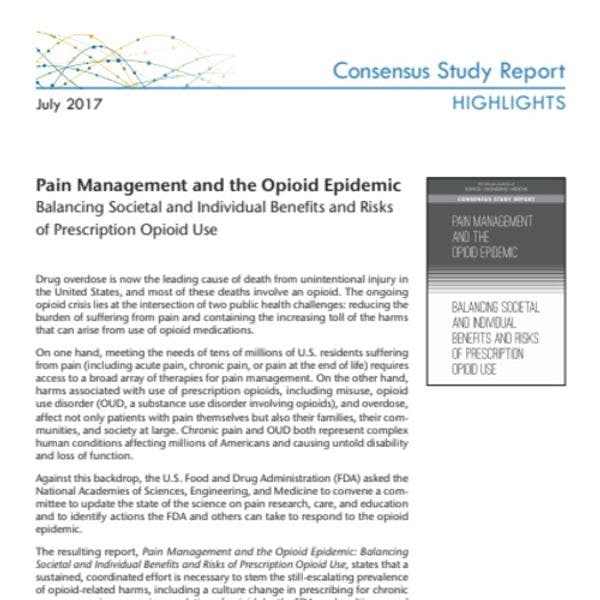La gestion de la douleur et l’épidémie d’opioïdes : Mettre en balance les avantages et les risques sociaux et individuels de l’usage d’opioïdes prescrits
Les académies nationales des sciences, d’ingénierie et de médecine affirment qu’un effort soutenu et coordonné est nécessaire pour endiguer la prévalence toujours croissante des dommages liés aux opioïdes. Pour en savoir plus, en anglais, veuillez lire les informations ci-dessous.
Abonnez-vous à l'Alerte mensuelle de l'IDPC pour recevoir des informations relatives à la politique des drogues.
Drug overdose, driven largely by overdose related to the use of opioids, is now the leading cause of unintentional injury death in the United States. The ongoing opioid crisis lies at the intersection of two public health challenges: reducing the burden of suffering from pain and containing the rising toll of the harms that can arise from the use of opioid medications. Chronic pain and opioid use disorder both represent complex human conditions affecting millions of Americans and causing untold disability and loss of function. In the context of the growing opioid problem, the U.S. Food and Drug Administration (FDA) launched an Opioids Action Plan in early 2016. As part of this plan, the FDA asked the National Academies of Sciences, Engineering, and Medicine to convene a committee to update the state of the science on pain research, care, and education and to identify actions the FDA and others can take to respond to the opioid epidemic, with a particular focus on informing FDA’s development of a formal method for incorporating individual and societal considerations into its risk-benefit framework for opioid approval and monitoring.
Click here to read the full article. (Access Restricted)
Keep up-to-date with drug policy developments by subscribing to the IDPC Monthly Alert.
